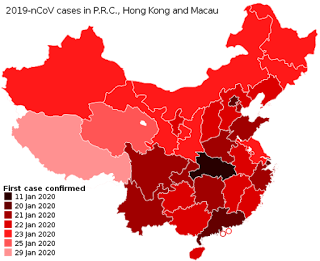U.S. Travel Restrictions from China Did Not Significantly Slow Spread of Covid-19
A new paper published as part of the Cato Working Papers (www.cato.org/workingpapers) posits that travel restrictions imposed from China did not halt transmission of the novel Coronavirus into the United States.
The authors write that, "Historically, travel restrictions to prevent the spread of pandemic influenzas have been ineffective at halting or significantly delaying the spread (WHO Writing Group, 2006)." They use what is called the synthetic control method (SCM) to estimate a "counterfactual" (meaning, something has not happened or is not the case) number of COVID-19 cases for the U.S. in the absence of the February 2, 2020 travel restriction (Abadie, 2019; Abadie et al., 2010, 2015; Abadie et al., 2003; McClelland et al., 2017).
"We use four different outcome variables to measure [the] number of COVID-19 cases: the cumulative number of new COVID-19 cases, the cumulative number of COVID-19 cases per million, the number of new cases, and the number of new cases per million. The predictor variables are those that influence the number of COVID-19 cases."
Researchers write that the "Synthetic United States - meaning, its validity is dependent on the relationship between the content of the proposition and reality - must be estimated from comparable countries to avoid interpolation bias. Since the number of COVID-19 cases after the U.S. travel ban is the outcome of interest, we select a donor pool of countries with similar levels of economic development (OECD, 2020), that are in the Northern Hemisphere (Luo et al., 2020), and that did not impose a travel ban on China until after the end of the post-treatment period (IATA, 2020)."
Their pool of countries comprised Austria, Belgium, Canada, France, Germany, Ireland, Japan, South Korea, the Netherlands, Norway, Sweden, Switzerland and the U.K. The researchers ran 16 specifications, with the predictor variables for each the immigrant population,the total population, population density, the percent of the population that is elderly, the share of the population that is urban, the median age, real GDP per capita (PPP), the absolute latitude or distance from the equator, the number of immigrants from China, and the number of airports with direct flights to China.
They write that these variables are similar to those in other such research on the effect of state-level social
distancing policy on the spread of COVID-19 (Friedson et al., 2020).
Again, researchers found no statistically significant association between the U.S. imposition of
travel restrictions and the number of new cases or the new case rate per million. "Additionally, there is no significant effect of the travel ban on the number of new cases or the rate of new cases per million in the long-run," and the "U.S. travel restriction on the PRC [People's Republic of China] had no discernible effect on flattening the disease growth curve."
The paper was published by Alex Nowrasteh, Director of Immigration Studies, Center for Global Liberty and Prosperity and Andrew C. Forrester, Research Associate at the Cato Institute’s Center for Global Liberty and Prosperity. For more information, download and read the study here.
PHOTO: By Cypp0847 - Own work, base map from File:China Blank Map with Province Names.svg, CC BY-SA 4.0, https://commons.wikimedia.org/w/index.php?curid=86164731



Comments
Post a Comment